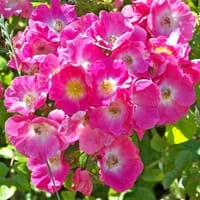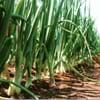Life Span
Annual and Perennial
Perennial
Origin
Hybrid origin
Eastern Europe, Russia, Siberia
Types
it is a type of rose
Not Available
Habitat
Not Available
Damp shady woods, Pastures
USDA Hardiness Zone
5-8
3-8
Sunset Zone
A1, A2, A3, H1, H2, 1a, 1b, 2a, 2b, 3a, 3b, 4, 5, 6, 7, 8, 9, 10, 11, 12, 13, 14, 15, 16, 17, 18, 19, 20, 21, 22, 23, 24
A2, A3, 1a, 1b, 2a, 2b, 3a, 3b, 4, 5, 6, 7, 8, 9, 10, 14, 15, 16, 17, 18, 19, 20, 21, 22, 23
Habit
Vining/Climbing
Clump-Forming
Minimum Width
Not Available
Flower Color
White, Pink
White, Purple, Blue Violet
Flower Color Modifier
Not Available
Bicolor
Fruit Color
Non Fruiting Plant
Not Available
Leaf Color in Spring
Dark Green
Green, Dark Green
Leaf Color in Summer
Dark Green
Green, Dark Green
Leaf Color in Fall
Dark Green
Green, Dark Green
Leaf Color in Winter
Light Green
Light Green
Plant Season
Summer
Summer
Sunlight
Full Sun, Partial Sun
Full Sun, Partial Sun
Type of Soil
Loam, Sand
Clay, Loam, Sand
The pH of Soil
Acidic, Neutral
Acidic, Neutral
Soil Drainage
Well drained
Average
Bloom Time
Summer, Late Summer
Early Summer, Summer
Tolerances
Drought
Drought
Where to Plant?
Container, Ground, Pot
Ground
How to Plant?
Divison, Seedlings
Bulbs, Seedlings
Plant Maintenance
Medium
Medium
Watering Requirements
Water Deeply, Water in morning to avoid prompting diseases
Keep ground moist
In Summer
Lots of watering
Lots of watering
In Spring
Moderate
Moderate
In Winter
Average Water
Average Water
Soil pH
Acidic, Neutral
Acidic, Neutral
Soil Type
Loam, Sand
Clay, Loam, Sand
Soil Drainage Capacity
Well drained
Average
Sun Exposure
Full Sun, Partial Sun
Full Sun, Partial Sun
Pruning
Prune after flowering, Remove damaged leaves, Remove dead branches
Remove damaged leaves, Remove dead branches, Remove dead leaves
Fertilizers
Fast release fertilizer, Fertilize in early spring, Fertilize three times a year
All-Purpose Liquid Fertilizer
Pests and Diseases
Aphids, Black Spot, Caterpillars, Downy mildew, glasshouse red spider mite, Insects, Leaf Hoppers, Powdery mildew, rose leaf-rolling sawfly, Rust, Scale
Red blotch
Plant Tolerance
Drought
Drought
Flower Petal Number
Single
Single
Foliage Texture
Medium
Medium
Foliage Sheen
Glossy
Matte
Attracts
Not Available
pollinators
Allergy
Not Available
allergic reaction, Skin irritation
Aesthetic Uses
Showy Purposes, Used for decorating walls, fences, gates, hedges, etc.
Bog Garden, Showy Purposes, Woodland margins
Beauty Benefits
Perfumes
Not Available
Environmental Uses
Air purification
Air purification
Medicinal Uses
No Medicinal Use
Expectorant
Part of Plant Used
Flowers, Whole plant
Flowers, Root
Other Uses
Used as Ornamental plant
Used as an insecticide
Used As Indoor Plant
Yes
No
Used As Outdoor Plant
Yes
Yes
Garden Design
Cutflower, Feature Plant, Groundcover, Hedges, Mixed Border, Rock Garden / Wall, Topiary / Bonsai / Espalier, Vine
Bog Garden, Cutflower, Feature Plant, Foundation, Mixed Border
Botanical Name
ROSA 'American Pillar'
IRIS sibirica
Common Name
Climbing Rose, Rambling Rose
Siberian Iris
In Hindi
Climbing Rose
Siberian Iris
In German
Kletterrose
Sibirische Schwertlilie
In French
escalade Rose
L'Iris de Sibérie
In Spanish
Rose que sube
Siberian Iris
In Greek
αναρρίχηση Rose
Siberian Iris
In Portuguese
Rosa de escalada
Siberian Iris
In Polish
Climbing Rose
Kosaciec syberyjski
In Latin
Rosa scandere
Siberian Iris
Phylum
Magnoliophyta
Tracheobionta
Class
Magnoliopsida
Liliopsida
Family
Rosaceae
Iridaceae
Clade
Not Available
Angiosperms, Monocots
Tribe
Not Available
Irideae
Subfamily
Not Available
Iridoideae
Number of Species
Not Available
Not Available
Season and Care of Climbing Rose and Siberian Iris
Season and care of Climbing Rose and Siberian Iris is important to know. While considering everything about Climbing Rose and Siberian Iris Care, growing season is an essential factor. Climbing Rose season is Summer and Siberian Iris season is Summer. The type of soil for Climbing Rose is Loam, Sand and for Siberian Iris is Clay, Loam, Sand while the PH of soil for Climbing Rose is Acidic, Neutral and for Siberian Iris is Acidic, Neutral.
Climbing Rose and Siberian Iris Physical Information
Climbing Rose and Siberian Iris physical information is very important for comparison. Climbing Rose height is 300.00 cm and width Not Available whereas Siberian Iris height is 50.80 cm and width 61.00 cm. The color specification of Climbing Rose and Siberian Iris are as follows:
Climbing Rose flower color: White and Pink
Climbing Rose leaf color: Dark Green
Siberian Iris flower color: White, Purple and Blue Violet
- Siberian Iris leaf color: Green and Dark Green
Care of Climbing Rose and Siberian Iris
Care of Climbing Rose and Siberian Iris include pruning, fertilizers, watering etc. Climbing Rose pruning is done Prune after flowering, Remove damaged leaves and Remove dead branches and Siberian Iris pruning is done Remove damaged leaves, Remove dead branches and Remove dead leaves. In summer Climbing Rose needs Lots of watering and in winter, it needs Average Water. Whereas, in summer Siberian Iris needs Lots of watering and in winter, it needs Average Water.





